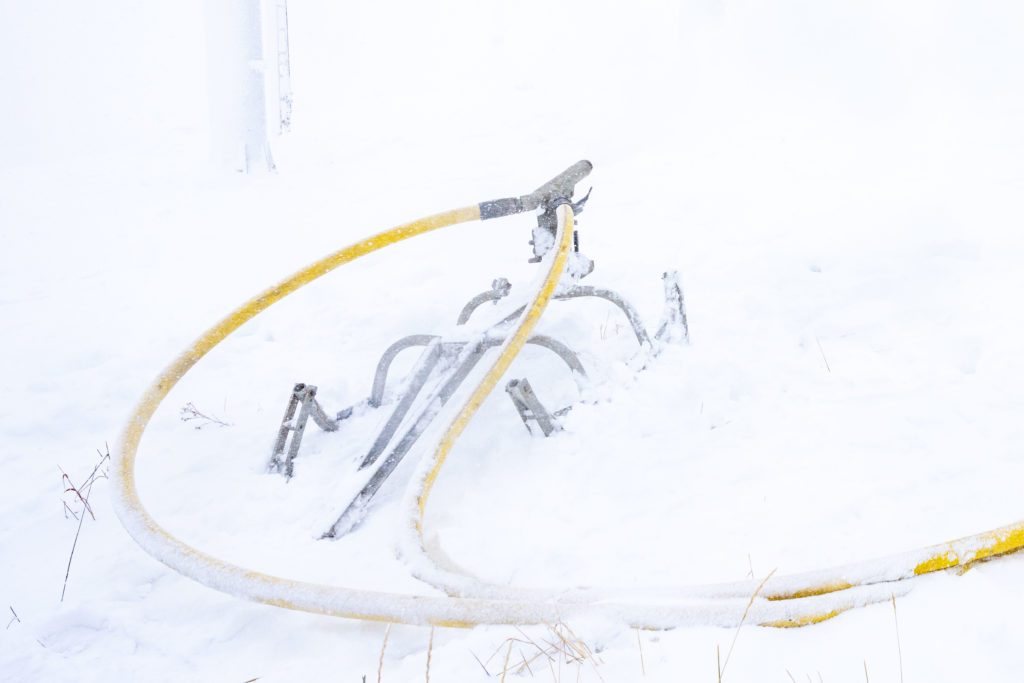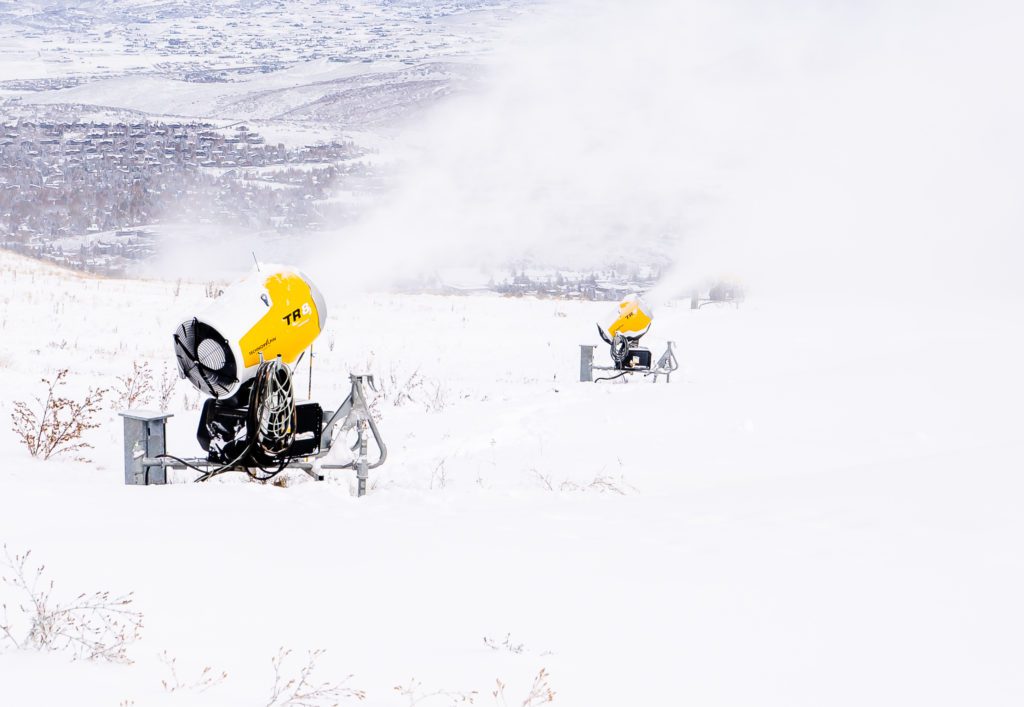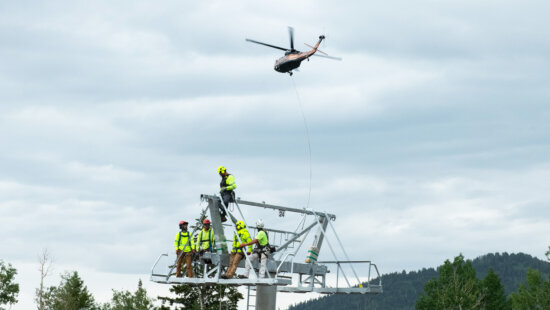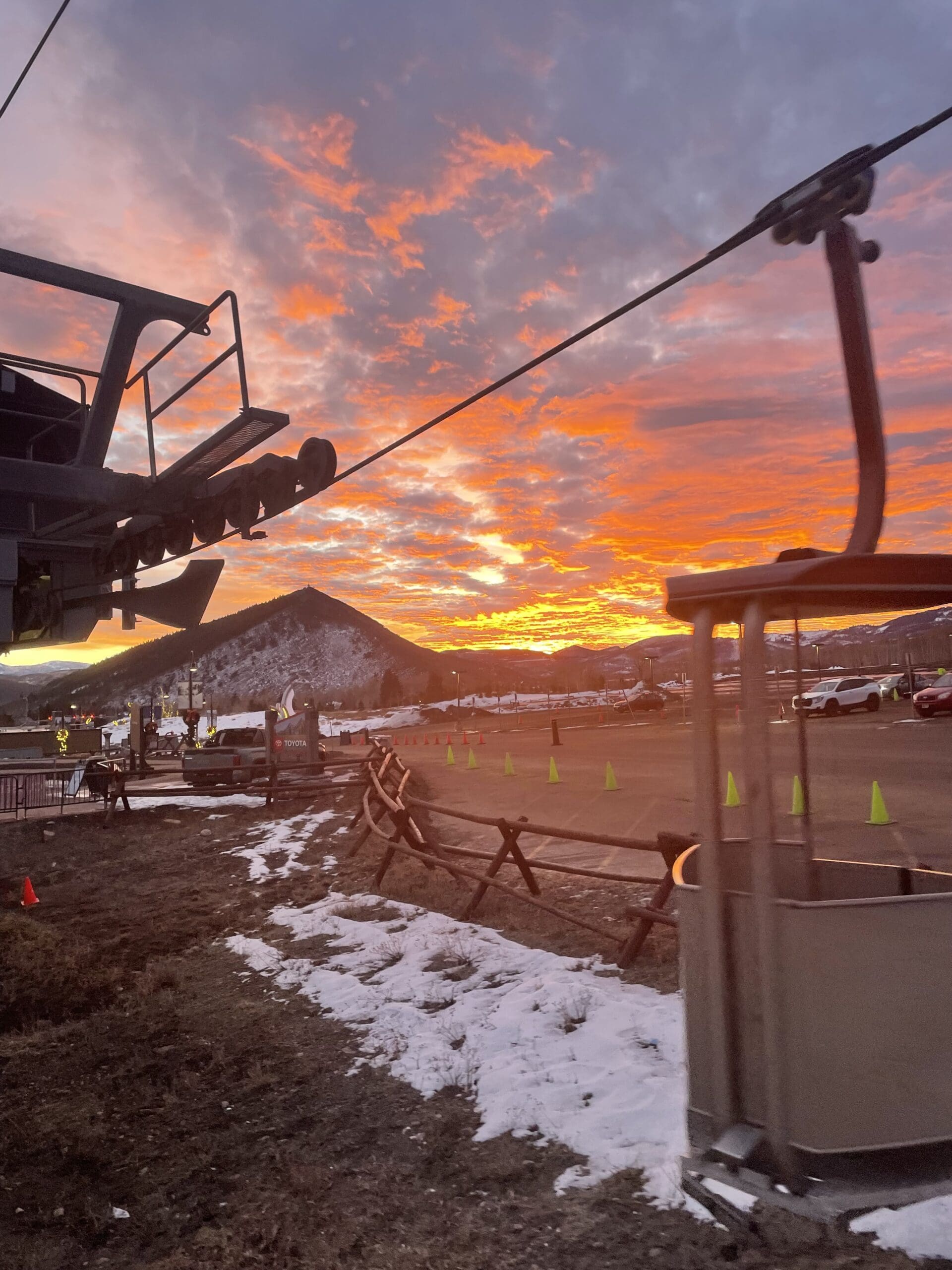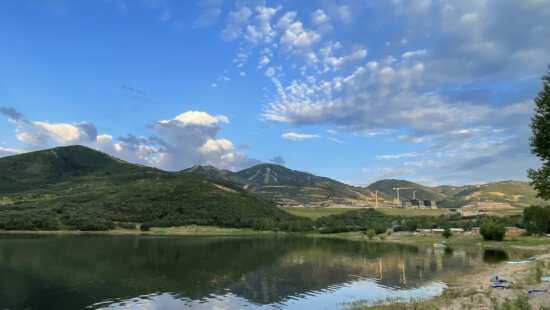Community
Snowmaking and Snowmakers: the backbone of a ski resort
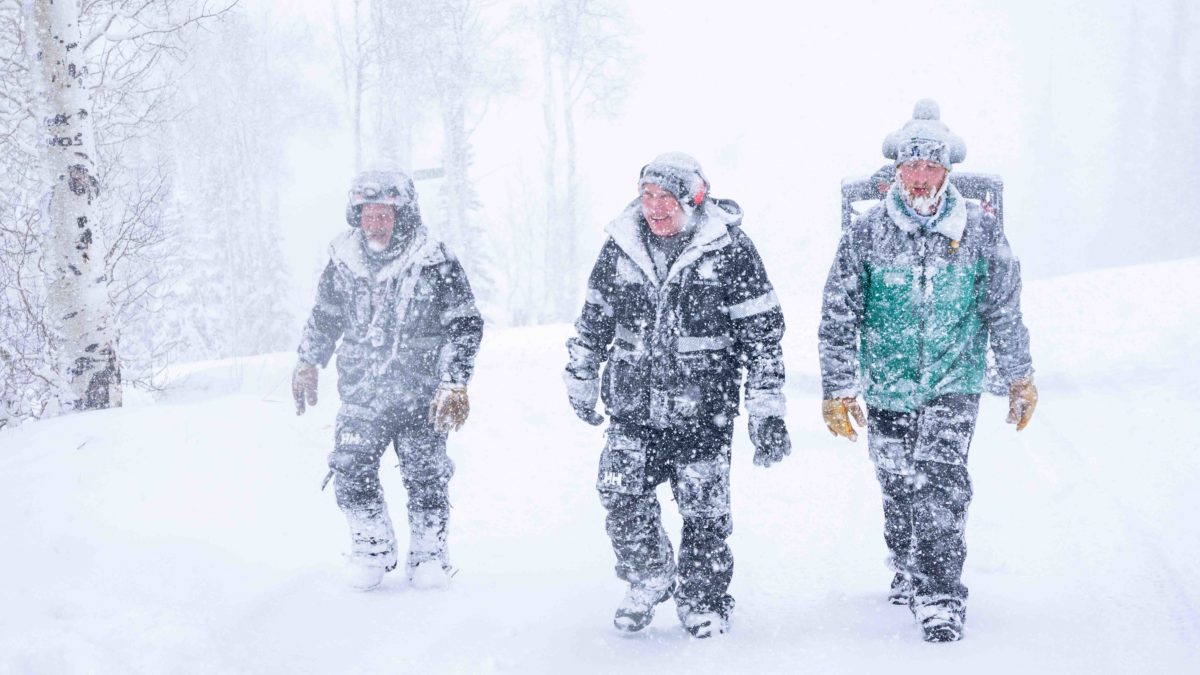
Pictured from left to right: Craig Miller, David Brown and Chris Cummings from the Deer Valley snowmaking crew Photo: TownLift // Kevin Cody.
PARK CITY, Utah — Snowmaking has been an essential tool for ski resorts for several decades. The ability to supplement mother nature’s snowfall with targeted artificial snow helps create a stable snowpack for ski runs to be established and provide additional snow coverage. In a bad snow year, snowmaking can be the reason a resort can open, while in a good year, snowmaking can make skiing even better.
The start of this winter has been one of the best in recent memory for early-season snowfall and cold temperatures. Locally, the many efforts of snowmaking crews have enabled both Park City Mountain Resort (PCMR) and Deer Valley Resort (DV) to open earlier than planned.
PCMR took its first step in snowmaking in 1978 when the initial systems were built after a poor snow year. Continued investments have been made to increase its capacity through several acquisitions. Both PCMR and DV have well over 300 snow guns, with some permanently mounted, and mobile units can be positioned where needed.
Having underground piping and hydrants throughout the resort also plays a crucial role in their ability to make snow effectively. All of the snow guns and piping are important, but it truly takes a dedicated staff that is out in the elements on a regular basis in order to operate.
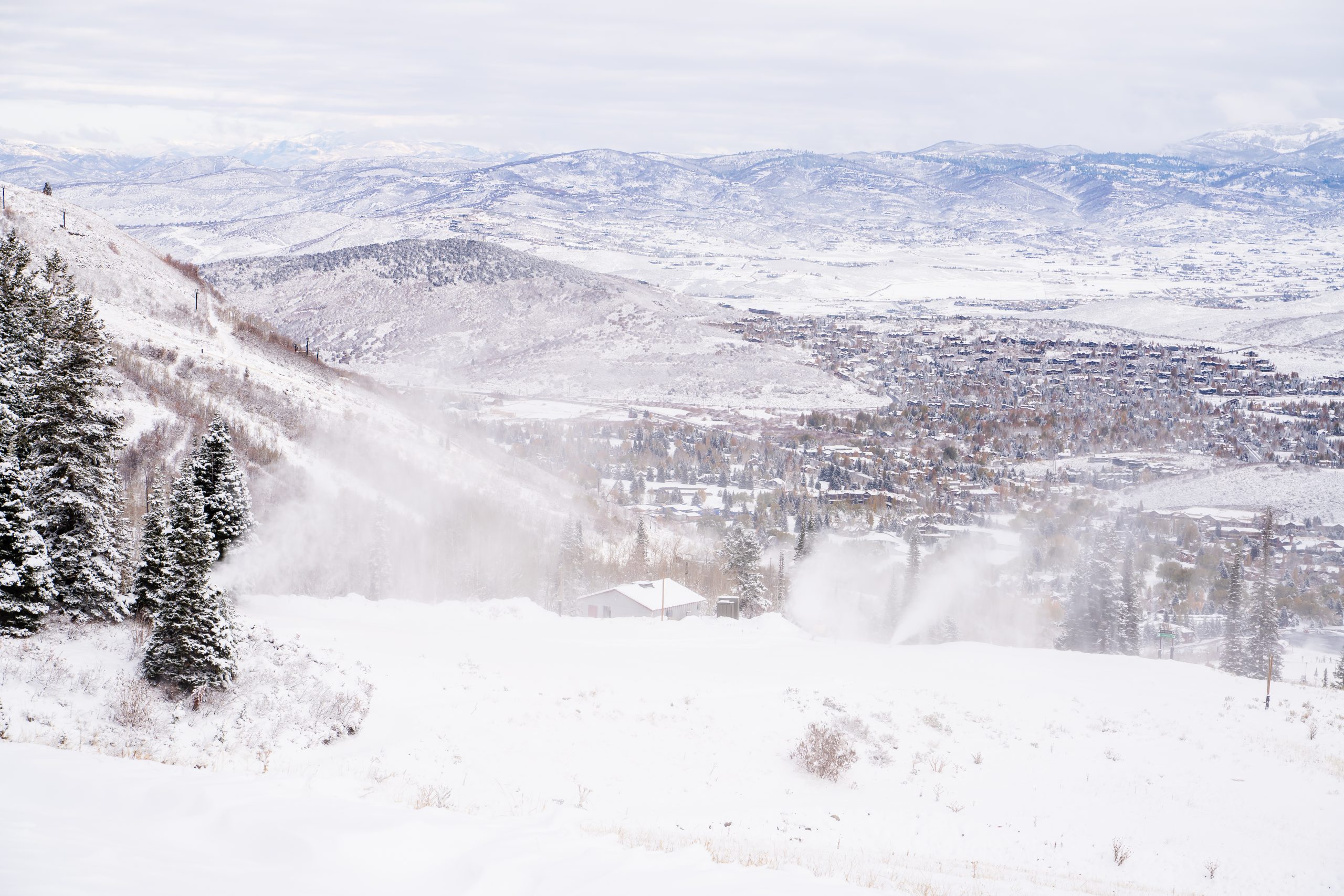
“Snowmaking is one of the best jobs on the mountain. We get to put snow on the ground for people to enjoy. You can see the results of your work right away, and that is really gratifying. Our team works in all types of weather; at the height of the season, if the conditions are right, we work at all times of day. We work hard, but we also have fun and are proud of the work we do,” said Darren “Daz” Northwood, Park City Mountain Snowmaking Manager.
“Snowmakers are a special breed of people; they work very hard in all types of weather, from freezing cold to raging blizzards. The job does have its perks, from having the whole mountain to themselves at night to amazing sunsets and sunrises and seeing the piles of snow getting bigger. Each “gun run” is huge job satisfaction. The crew here at Deer Valley comes from all over the country, and this year we are lucky to have some international year-round snowmakers that have ‘endless winters.’ It amazes me what this crew can do and the amount of snow that can be made in a single night,” said Brett Hawksford, Snowmaking Manager at Deer Valley Resort.
A critical factor in snowmaking is ‘wet-bulb’ temperature, or the combined air temperature and humidity measurement. For every 10% humidity below 100%, the wet-bulb temperature decreases by one degree. For example, if the air temperature is at 32 degrees and the humidity level is at 60%, then the wet-bulb temperature would be 28 degrees which is the maximum temperature at which snow can be made. In some cases, snow can be made even if the air temperature is above freezing as long as the corresponding humidity is low enough.
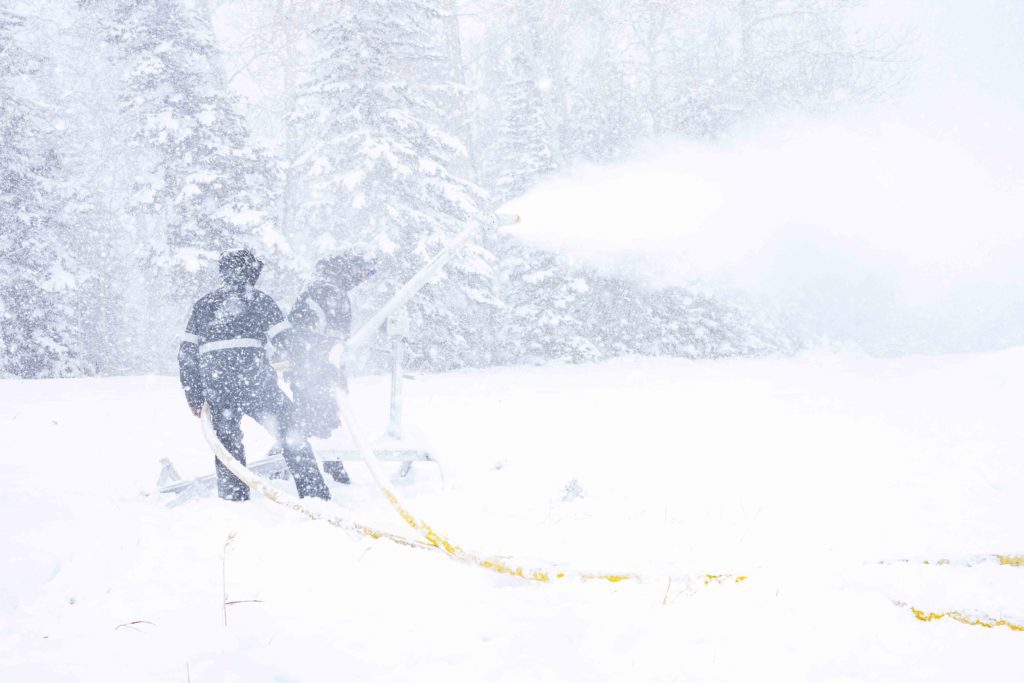
“We can start making [snow] at 28 degrees, but mid-teens are the best; when it gets colder than that, things can start to freeze while they are running. Snowmaking is all about turning water into snow, so the colder the water, the quicker it will freeze, with mid-thirty-degree water being optimal,” said Hawksford.
The actual snowmaking process consists of air and water being blown from snow guns into the atmosphere. In many cases, those guns are stationary pieces scattered around the resort. Both resorts use a combination of automated and manual snowguns.
Automated snow guns work by passing water through a nozzle on the gun’s barrel. The water is then mixed with air from a compressor creating a reaction in which the plume being blown into the air cools and falls as snow. Similarly, manual snow guns combine compressed air and water at high pressure, producing water droplets high in the air, which then freeze and fall as snow.
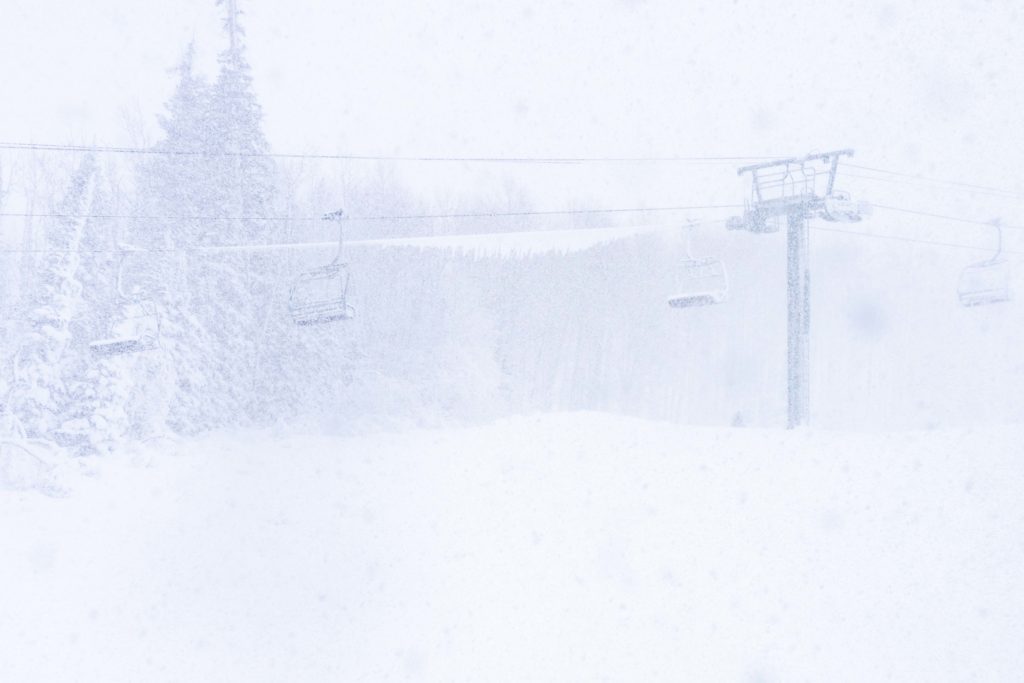
Beyond temperature and humidity levels, location can be just as important as not every area of a ski run or the resort itself needs the help of a snow gun. Even the ideal location can be rendered unavailable with both gusts and sustained winds, causing the spray from snow guns to land in unwanted areas.
“We make more snow on steep pitches, breakers, lower elevation, South facing, and where snowcats turn around, We make less snow on flatter, north facing terrain,” said Hawksford.
Appreciate the coverage? Help keep Park City informed.
TownLift is powered by our community. If you value independent, local news that keeps Park City connected and in the know, consider supporting our newsroom.

